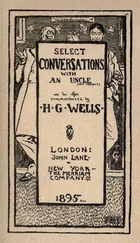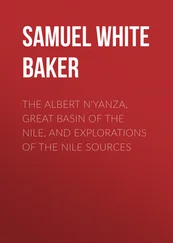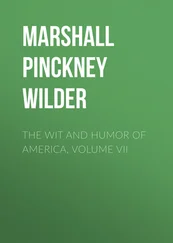Samuel White Baker - Wild Beasts and Their Ways, Reminiscences of Europe, Asia, Africa and America. Volume 1
Здесь есть возможность читать онлайн «Samuel White Baker - Wild Beasts and Their Ways, Reminiscences of Europe, Asia, Africa and America. Volume 1» — ознакомительный отрывок электронной книги совершенно бесплатно, а после прочтения отрывка купить полную версию. В некоторых случаях можно слушать аудио, скачать через торрент в формате fb2 и присутствует краткое содержание. Жанр: Путешествия и география, История, foreign_edu, foreign_antique, foreign_prose, на английском языке. Описание произведения, (предисловие) а так же отзывы посетителей доступны на портале библиотеки ЛибКат.
- Название:Wild Beasts and Their Ways, Reminiscences of Europe, Asia, Africa and America. Volume 1
- Автор:
- Жанр:
- Год:неизвестен
- ISBN:нет данных
- Рейтинг книги:3 / 5. Голосов: 1
-
Избранное:Добавить в избранное
- Отзывы:
-
Ваша оценка:
- 60
- 1
- 2
- 3
- 4
- 5
Wild Beasts and Their Ways, Reminiscences of Europe, Asia, Africa and America. Volume 1: краткое содержание, описание и аннотация
Предлагаем к чтению аннотацию, описание, краткое содержание или предисловие (зависит от того, что написал сам автор книги «Wild Beasts and Their Ways, Reminiscences of Europe, Asia, Africa and America. Volume 1»). Если вы не нашли необходимую информацию о книге — напишите в комментариях, мы постараемся отыскать её.
Wild Beasts and Their Ways, Reminiscences of Europe, Asia, Africa and America. Volume 1 — читать онлайн ознакомительный отрывок
Ниже представлен текст книги, разбитый по страницам. Система сохранения места последней прочитанной страницы, позволяет с удобством читать онлайн бесплатно книгу «Wild Beasts and Their Ways, Reminiscences of Europe, Asia, Africa and America. Volume 1», без необходимости каждый раз заново искать на чём Вы остановились. Поставьте закладку, и сможете в любой момент перейти на страницу, на которой закончили чтение.
Интервал:
Закладка:
Sir Samuel White Baker
Wild Beasts and Their Ways, Reminiscences of Europe, Asia, Africa and America – Volume 1
CHAPTER I
Forty years ago our troops were armed with a smooth-bore musket, and a small force known as the "Rifle Brigade" was the exception to this rule.
The military rifle carried a spherical bullet, and, like all others of the period, it necessitated the use of a mallet to strike the ball, which, being a size larger than the bore, required the blow to force it into the rifling of the barrel in order to catch the grooves.
Sporting rifles were of various sizes, but they were constructed upon a principle generally accepted, that extreme accuracy could only be obtained by burning a very small charge of powder.
The outfit required a small mallet made of hardwood faced with thick buff leather, a powerful loading-rod, a powder-flask, a pouch to contain greased linen or silk patches; another pouch for percussion caps; a third pouch for bullets. In addition to this cumbersome arrangement, a nipple-screw was carried, lest any stoppage might render necessary the extraction of the nipple.
The charge of powder in ordinary use for a No. 16 bore (which carried an ounce spherical ball) was 1 1/2 dram, and the sights were adjusted for a maximum range of 200 yards. Although at this distance considerable accuracy could be attained at the target upon a quiet day, it was difficult to shoot with any precision at an unmeasured range owing to the high trajectory of the bullet. Thus for sporting purposes it was absolutely essential that the hunter should be a first-rate judge of distance in order to adjust the sights as required by the occasion. It was accordingly rare to meet with a good rifle-shot fifty years ago. Rifle-shooting was not the amusement sought by Englishmen, although in Switzerland and Germany it was the ordinary pastime. In those countries the match-rifle was immensely heavy, weighing, in many instances, 16 lbs., although the bullet was exceedingly small.
The idea of non-recoil was paramount as necessary to ensure accuracy.
It will be at once perceived that the rifle was a most inferior weapon, failing through a low velocity, high trajectory, and weakness of penetration.
In 1840, I had already devoted much attention to this subject, and I drew a plan for an experimental rifle to burn a charge of powder so large that it appeared preposterous to the professional opinions of the trade. I was convinced that accuracy could be combined with power, and that no power could be obtained without a corresponding expenditure of powder. Trajectory and force would depend upon velocity; the latter must depend upon the volume of gas generated by explosion.
The rifle was made by Gibbs of Bristol. The weight was 21 lbs., length of barrel 36 inches, weight of spherical belted bullet 3 ounces, of conical bullet 4 ounces, charge of powder 16 drams. The twist was one full turn in the length of barrel. The rifling was an exceedingly deep and broad groove (two grooves), which reduced the difficulty of loading to a minimum, as the projecting belt enabled the bullet to catch the channel instantly, and to descend easily when wrapped in a greased silk patch without the necessity of hammering. The charge of powder was inserted by inverting the rifle and passing up the loading-rod with an ounce measure screwed to the end; this method prevented the powder from adhering to the sides of the barrel, and thus fouling the grooves.
An extraordinary success attended this rifle, which became my colossal companion for many years in wild sports with dangerous game. It will be observed that the powder charge was one-third the weight of the projectile, and not only a tremendous crushing power, but an extraordinary penetration was obtained, never equalled by any rifle that I have since possessed.
This weapon was in advance of the age, as it foreshadowed the modern Express, and the principle was thoroughly established to my own satisfaction, that a sporting rifle to be effective at a long range must burn a heavy charge of powder, but the weight of the weapon should be in due proportion to the strain of the explosion.
When I first visited Ceylon in 1845, there were several renowned sportsmen who counted their slain elephants by many hundreds, but there were no rifles. Ordinary smooth-bore shot-guns were the favourite weapons, loaded invariably with a double charge of powder and a hardened ball. In those days the usual calibre of a gun was No. 14 or 16. A No. 12 was extremely rare. The charge for No. 16 was 2 3/4 drams of fine grain powder, and drams for No. 12. Accordingly, the light guns, or "fowling-pieces," as they were termed, were severely tested by a charge of 6 drams of the strongest powder with a hardened bullet; nevertheless I never heard of any failure.
At a short range the velocity and penetration of an ounce spherical ball, with the heavy powder charge, were immense, but beyond 50 yards the accuracy was imperfect.
I believe I was the first to introduce rifles into Ceylon, which were then regarded by the highest authorities in the island as impractical innovations, too difficult to sight, whereas an ordinary gun could be used with ball more quickly in taking a snap-shot.
The rifles which I had provided were heavy, the 3 ounce already mentioned, 21 lbs., and a long 2 ounce by Blisset, 16 lbs. The latter was a polygroove, the powder charge only 1 1/2 dram when I originally purchased it. It was wonderfully accurate at short ranges with the small charge, which I quickly increased to 6 drams, thereby losing accuracy, but multiplying velocity.
Twelve months' experience with elephants and buffaloes decided me to order a battery of double-barrelled rifles, No. 10, two-grooved, with 6 drams of fine grain powder, and spherical-belted bullets. These were most satisfactory, and they became the starting-point for future experiments.
Shortly before the Crimean War, the musket was abolished, and about 1853 the British army was armed throughout with rifles. The difficulty of a military rifle lay in the rapid fouling of the barrel, which necessitated a bullet too small to expand sufficiently to fill the grooves; this resulted in inaccuracy. Even if the bullet were properly fitted, it became impossible to load when the barrel began to foul after a few discharges.
At that time I submitted a plan to the authorities which simplified the difficulty, and having left the pattern bullet at Woolwich, it quickly appeared with a slight modification as the "Boxer bullet." My plan designed a cone hollowed at the base. The bullet was a size smaller than the bore, which enabled it to slide easily down the barrel when foul. The hollow base fitted upon a cone of boxwood pointed at the insertion, but broad at the base, which was larger than the diameter of the hollow in the bullet. It may be easily understood that although this compound bullet was smaller than the bore of the rifle, a blow with the ramrod after loading would drive the conical bullet upon the larger diameter of the boxwood cone, which, acting like a wedge, would expand the lead, thus immediately secured within the barrel. The expansion when fired drove the boxwood into the centre of the bullet, which of necessity took the rifling.
The Boxer bullet superseded the boxwood plug by the use of a piece of burnt clay, which was less expensive and equally serviceable.
Before breechloaders were invented, we were obliged to fit out a regular battery of four double rifles for such dangerous game as elephants, buffaloes, etc., as the delay in re-loading was most annoying and might lead to fatal accidents.
In hot damp climates it became necessary to fire off and clean the entire battery every evening, lest a miss-fire should be the consequence upon the following morning from the condensation of moisture in the nipple during night. This was not only great trouble and a wasteful expenditure of ammunition, but the noise of so many loud reports just at the hour when wild animals were on the move, alarmed the country. Trustworthy gun-carriers are always difficult to procure, and it was by no means uncommon that in moments of danger, when the spare rifles were required, the gun-bearers had bolted from the scene, and the master was deserted.
Читать дальшеИнтервал:
Закладка:
Похожие книги на «Wild Beasts and Their Ways, Reminiscences of Europe, Asia, Africa and America. Volume 1»
Представляем Вашему вниманию похожие книги на «Wild Beasts and Their Ways, Reminiscences of Europe, Asia, Africa and America. Volume 1» списком для выбора. Мы отобрали схожую по названию и смыслу литературу в надежде предоставить читателям больше вариантов отыскать новые, интересные, ещё непрочитанные произведения.
Обсуждение, отзывы о книге «Wild Beasts and Their Ways, Reminiscences of Europe, Asia, Africa and America. Volume 1» и просто собственные мнения читателей. Оставьте ваши комментарии, напишите, что Вы думаете о произведении, его смысле или главных героях. Укажите что конкретно понравилось, а что нет, и почему Вы так считаете.












